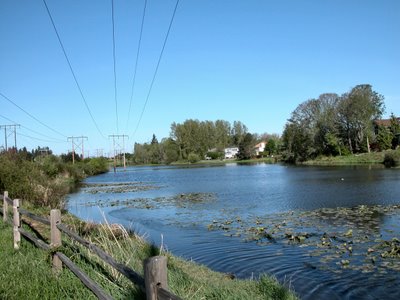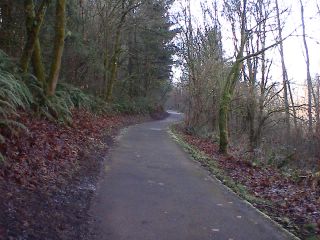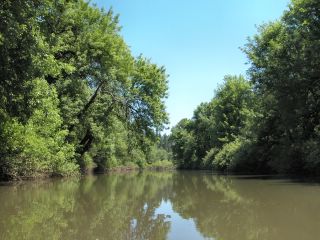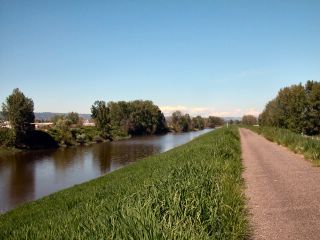
Date visited: February 19, 2011
Path Surface: Asphalt
Elevation gain/loss: Variable. 250 feet as described below.
Distance: Up to 21 miles one way
Ratings: Setting ++++ Calorie-burning ++++
Directions: Choose from several trailheads. We have gone to the Manning trailhead for so long we naturally gravitate there. If you've driven to the coast on Hwy 26, you've seen the sign for the turn off, just west of Banks.
Next time we will try the recently-opened Banks trailhead because there is more parking. Page 2 of this pdf brochure has a map of the trail and trailheads.
Sunshine in February seems more valuable than in, say, August and that got us out of the house and onto our bikes last Saturday. But really, sunny or rainy, this trail is a great place to get some exercise. Although we were on bikes today, many people were walking the trail.
We've been coming here for years, biking the various sections of the trail as they were completed. Today, we rode from the Manning trailhead northwest to the entrance road of Stub Stewart Park. This section includes crossing the Buxton trestle, an unusual thrill on a bike. We also rode to Banks to check out the new trailhead there, a big improvement from the abrupt end to the trail formerly in place.
From Banks, the trail has little elevation change, which continues as you pass the Manning trailhead. At about mile 5, the trail becomes a gentle but steady climb which doesn't quit as far as we rode. The surroundings likewise change from pasture to woods. We stopped several times to enjoy the scenery and the climb kept us warm in spite of a trail side skiff of snow in some shady spots.
We'll be checking out other sections of the trail in the future to see what changes have been made since our last visits to those sections several years ago.

























